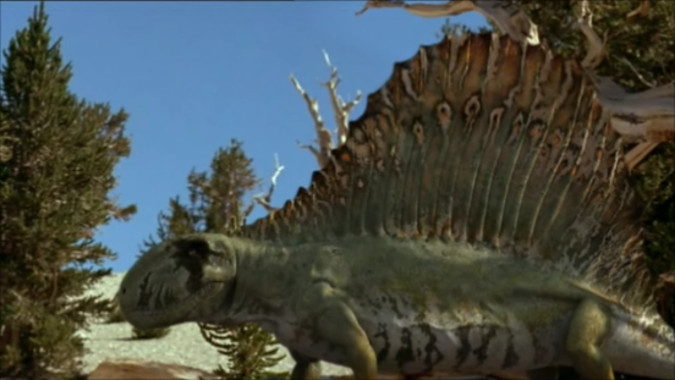Off Topic: What is a stem mammal?

Amazingly, my inner paleontology nerd gets excited about things that aren’t dinosaurs. If I were to be honest, I’m more interested in therapsids. What are therapsids? You are therapsids. Therapsida is a huge group of Synapsids that includes all mammals, and all our relatives that are ancestral to us and their close relatives. Some of the earliest therapsids are what we now call stem mammals, but which used to be called mammal-like reptiles although they were significantly more like mammals than reptiles. The therapsida evolved from the pelycosaurs — think Dimetrodon and its close relatives — some 275 million years or more ago. And until the Permian extinction event known as the Great Dying, therapsids dominated planet Earth for a period of more than 25 million years.
Now, it’s clear that after the Permian-Triassic Extinction roughly 250 million years ago, archosaurs like dinosaurs and pterosaurs rose to become the dominant land amniotes, and our therapsid ancestors evolved into small dog and shrew-like animals filling a nocturnal niche. We could speculate why all day, just as we could speculate on why after the Cretaceous-Paleogene Extinction some 65 million years ago it was therapsids and not archosaurs who became the dominant land species and even colonized the oceans. In both cases, a widely dominant group was pushed to the fringes by a mass extinction, and the other group became dominant in the aftermath. It’s even the same two groups trading off, with the archosauria eclipsing the therapsida 250 million years ago, and the therapsida doing the same to the archosaurian dinosaurs 65 million years ago.

From sail backed monsters to us
But neither of those extinctions changes the fact that during the Permian, the therapsidia were dominant. They were predators and prey species, with wide varieties of body plans and skull structure, mammalian gaits and potentially even fur on some species — we’ve found coprolite fossils with hair within the fossil structure dating back to the Permian.
The complete story of the evolution of these amazing animals dates back over 320 million years and I recommend getting into them, but the fact is it’s a lot harder to be interested in stem mammals than dinosaurs, because there’s simply so much less material out there. The only real member of the mammalian lineage from those times that gets much attention is Dimetrodon, with even amazing predators like Inostrancevia and Sauroctonus maybe occasionally popping up on an old episode of Primeval or something.
There are whole lineages of these awesome animals, not all of which immediately died out when the Permian came to an end — massive Lisowicia bojani was a nine ton, elephant sized animal during the Triassic and a member of the dicynodont lineage. Lisowicia’s size would have rivaled or exceeded any dinosaur during the Triassic, proving that the stem mammals were capable of evolving into massive beasts.
Stem mammals are just as cool as dinosaurs, and we’re discovering more about them all the time. We now know, for example, that the therapsids of 270 million years ago had already evolved a mammalian forelimb meaning that they likely could run just like modern mammals, dispersing the old paleontological depictions of them as sprawling reptiles. This is a trait that leads to big cats using their front limbs to ambush prey and primates using them to do all the things they do — including me typing this article — and it evolved in stem mammals.
By all means, continue to love the dinosaurs. They were amazing, the forerunners to birds, cousins to crocodiles. They were a widely spread group that was dominant over much of the world for 185 million years. But our own ancestry and the road it took from reptile to mammal shouldn’t be ignored. So dominant were the therapsids, it took the greatest, most destructive mass extinction in the world’s prehistory to end their reign. They held on for 185 million years to reclaim their spot as the dominant land amniotes, which they’ve held ever since. They’ve even made moves to challenge the dinosaurian domination of the air.
The next time you look at yourself, or your cat or dog, realize you are looking at a descendant of the ancient pelycosaurs, a therapsid, heir to millions upon millions of years of evolution. You are a cynodont, a dog tooth, and your ancestors had many of the same adaptations that have made you what you are.
But you’ll never be as cool as Instrancevia. Sorry. It had saber teeth!
Please consider supporting our Patreon!
Join the Discussion
Blizzard Watch is a safe space for all readers. By leaving comments on this site you agree to follow our commenting and community guidelines.
 @MatthewWRossi
@MatthewWRossi




